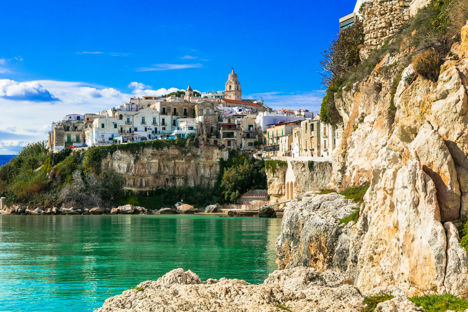
Puglia
This rich, fertile part of southeastern Italy forms the 'heel' of Italy's 'boot', and is famous for its agricultural prowess, pristine beaches and whitewashed, Greek-influenced hill towns. Get to know more about the food and drink of this rustic, beautiful region.
Puglia
This rich, fertile part of southeastern Italy forms the 'heel' of Italy's 'boot', and is famous for its agricultural prowess, pristine beaches and whitewashed, Greek-influenced hill towns. Get to know more about the food and drink of this rustic, beautiful region.
With an estimated sixty million olive trees in Puglia, it’s no wonder this region produces more olive oil than anywhere else in Europe. The vast majority of the region is given over to farming – be that olives, durum wheat, vineyards, vegetables or sheep – but there are plenty of medieval towns, bustling cities and historic landmarks to see too. There’s Lecce, dubbed the ‘Florence of the south’, the coastal cities of Bari and Taranto, the iconic little houses of Alberobello and the heavily Greek-influenced town of Salento.
When it comes to food, durum wheat and vegetables are king. Traditionally Puglia was a poor region, with many locals relying on hearty, filling dishes made of readily available and affordable ingredients. Bread is an important pillar of Puglian cuisine, and while there are plenty of sheep they’re traditionally reared for their milk rather than their meat. Fish and seafood is plentiful along the coast, and further inland you will find meat, although it tends to be horse and lamb rather than beef and pork (although pork is a common sight during celebrations and autumnal festivals).
If you’re visiting Puglia and wondering how to eat like a local or just want to expand your recipe repertoire and foodie knowledge of this fertile southern region, read on for everything you need to know about it.


